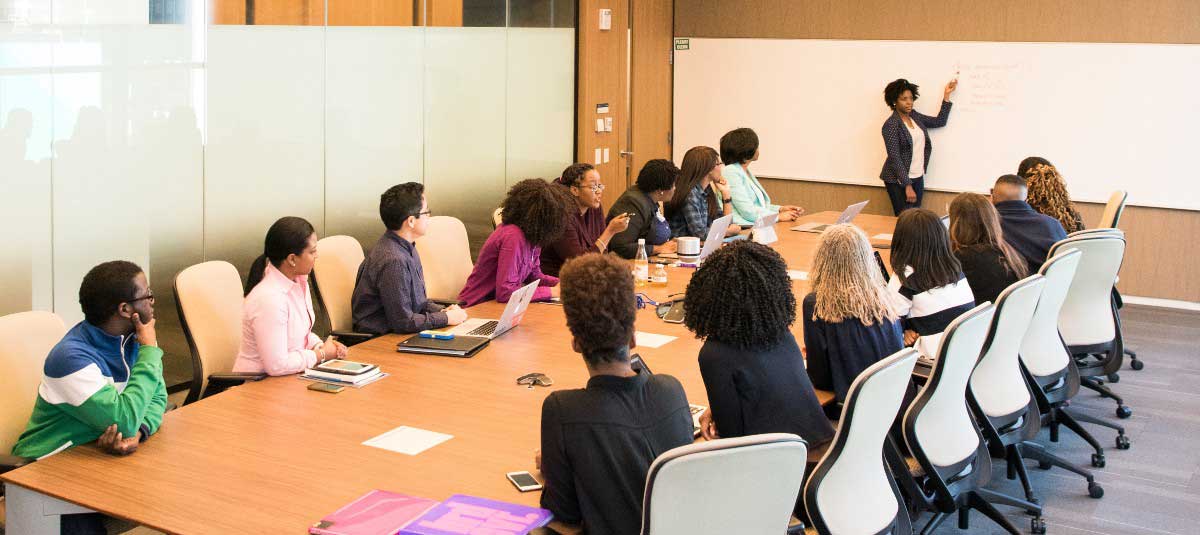5 Ways Successful Nonprofits Navigate Technology Change

Request a Demo
Learn how top nonprofits use Classy to power their fundraising.
This is a guest blog post by Kaia Swift, marketing and business operations manager at Heller Consulting.
In 2020, we rapidly became change experts as we all navigated significant and abrupt changes to every aspect of our lives. Practically overnight, we were left with no choice but to change how we work, socialize, exercise, and take care of our families.
Humans resist change because uncertainty is scary. Change is deeply emotional, impacting our sense of safety and security. We feel unsure we can adapt to whatever the new ways might be.
In a workplace, people may feel resistant because they do not have enough information about what changes will mean for their personal work situation and responsibilities. They may feel intimidated or insecure. Much as with a physical threat, change triggers a neurological stress response that launches the same physical and biochemical reactions as fight-or-flight.
In the case of a technology change like a new CRM system, it is a mistake to leave adoption of a change to chance. A “take it or leave it” stance will translate to low productivity and morale, loss of talent, backsliding to the old ways, and ultimately subpar outcomes. When change is managed and stakeholders embrace and internalize it, you will reap greater long-term success.
Luckily, there are proven techniques and approaches to help nonprofit organizations proactively engage people to adapt the new ways, whether they are new business processes, new technologies, or both.
Download Now: The Leader’s Guide to Motivating Employees
How Nonprofits Have Had to Adapt
As the COVID-19 pandemic swept the nation, in-person events were cancelled and virtual events became the new way of connecting with constituents. Organizations also relied on video conferencing tools to continue internal operations, as well as keep in touch with vulnerable populations. One of our clients at Heller Consulting even used video conferencing technology and a marketing automation tool to facilitate pet adoptions.
Fundraising is now mostly digital and at Heller, we are seeing more organizations rely on their CRM systems to track fundraising efforts, run reports in real time, and add on marketing automation technology to free up staff time and create deeper relationships with constituents.
How to Ensure Success in a Technology Change
Our Heller Consulting experts have led over 1,000 organizations through technology changes and we are often asked: how can you ensure success of the change? We can point to five ways successful organizations navigate change challenges.
1. Write a Vision for the Project and Refer to It Throughout the Change
Before you start a technology change, take the time to write out a vision for the project. Be sure to make it impactful and tie it back to your mission so that staff members see the through line from the change to the population you serve.
For example, you could write, “We’re moving to a new CRM because our old technology is no longer working.” But a more impactful statement would be, “We’re moving to a new CRM so we can grant more wishes to children.” We recommend you keep this vision statement short and to the point, a sentence or two. Some clients of ours have even posted it on the wall of a conference room or added it to email signoffs during the project.
Once you have that written vision, refer to it during tough challenges and remind all staff members of these objectives throughout the implementation.
2. Commit, Commit, Commit
Many technology implementations start strong but can quickly lose momentum if organizations don’t stay committed to the plan. Proactively communicate with your staff to provide updates, share successes, and detail what still needs to be done.
We typically recommend at least weekly check-in meetings throughout the project to keep everyone in the loop. Our clients have also seen success with holding town hall meetings after big project milestones. These meetings give staff members a time and place to ask questions, connect with each other and leaders, and be reminded of the vision of the project.
In addition to communication, setting expectations is a simple but effective way to maintain commitment. A lack of clear expectations for the project is a common pitfall we see at nonprofit organizations. When your team knows what to expect, they will have fewer surprises and uncertainty, and will ultimately be more committed to the goal of the project. We recommend having the leaders of the project state expectations during larger group meetings and then gather feedback on those expectations through the one-on-one meetings staff members have with their managers.
We also encourage celebrating small wins to keep everyone committed to the project. Our clients have given additional PTO, sent candy and coffee, and written “staff shoutouts” in newsletters to keep morale up through the change.
3. Apply Change Management Techniques
A more technical approach to change at your workplace will guide your organization through the process in a methodical way. This intentional approach to change management will mitigate risks, minimize hurdles, and identify previously unknown challenges that lurk beneath the surface.
Here are some specific, proven techniques:
- Designate an executive sponsor who leads the vision of the project and provides support and encouragement to staff. This is typically a chief development officer, chief information officer, or someone in a vice president role. We recommend that they are someone who is a trusted voice in your organization and is familiar enough with the project to answer strategic questions.
- Communicate the change through managers. Research has shown that people respond better to change when they are notified about it through a one-on-one conversation with a trusted manager.
- Facilitate deep listening and empathy for each other. We have a downloadable worksheet that we give to clients to help an organization think about how each role in the organization will be impacted by the change.
Read Next: Change Management Principles You Need to Know
4. Hire an Unbiased View
To add on to the previous tip, having an objective perspective is critical when making a large technology change. When you are in the middle of a change, it is difficult, if not impossible, to be detached.
By the time a large technology change is happening, it’s very possible your organization has already put a lot of time and effort into choosing the technology, building a business case to present to your board, and is facing the financial pressure of wanting the technology to be worth the investment. Hiring someone from outside of your organization to help you navigate the change will identify areas of resistance and and reduce the risk of potential failure Our change management coaches and experts, for instance, guide organizations through everything from crafting a vision, to supporting executive leaders, to actively coaching staff members throughout a project.
5. Make Time
It’s no secret that nonprofit staffs are busy. When an organization takes on a major change like a CRM implementation, it is often a project that staff members are asked to contribute to in addition to their regular daily responsibilities.
Changing processes and technology is too important an investment to treat as an afterthought. It must be prioritized, and staff must be given leeway with time and resources to successfully participate and learn.
One way we’ve seen organizations mitigate time issues is by tying new technology training to their professional goals or professional development time. This not only creates accountability, but it also allows for breathing room in an individual’s schedule.
We also encourage the executive leaders and managers on the project to participate in the learning. By role modeling the importance of the change, other staff members will feel more comfortable investing time in the new technology.
More Change Resources
Whether you are working to move fundraising efforts to online, use a new video conferencing tool, or looking to make a CRM switch, don’t forget to actively manage change. Check out these other resources from both Classy and Heller Consulting:
- Change Management: Key Principles You Need to Know
- A Real-World Story About Preparing a Nonprofit for Technology Change
- The Nonprofit’s Guide to Change Management
Kaia Swift is the marketing and business operations manager at Heller Consulting, an organization that helps nonprofits develop and implement a CRM technology strategy and ecosystem to better engage with their constituents. Check out their Heller Consulting Change Management Services if you have a specific project in mind.

A Leader’s Guide to Motivating Employees
Subscribe to the Classy Blog
Get the latest fundraising tips, trends, and ideas in your inbox.
Thank you for subscribing
You signed up for emails from Classy
Request a Demo
Learn how top nonprofits use Classy to power their fundraising.
 Explore Classy.org
Explore Classy.org 

